


 |
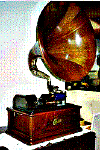
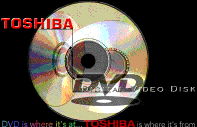 The Edison Opera Phonograph was a sensation in 1912. It played vax cylinders each of which contained four minutes of music. The DVD disc pictured on the right is the latest CD sensation 94 years later.
The Edison Opera Phonograph was a sensation in 1912. It played vax cylinders each of which contained four minutes of music. The DVD disc pictured on the right is the latest CD sensation 94 years later.
"A single DVD can play up to 133 minutes of a full featured Hollywood film--that's nearly 92% of all movies ever made--from one side! Picture quality is brilliant-nearly three times better than VHS, demonstrably better than Laserdisc. ....It can offer you up to 8 different sound tracks, and 32 subtitles, all with the push of a button." Quote from the first Toshiba DVD home page
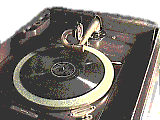 In 1877 Edison made the first device that could both record sound and play it back.
Edison constructed a cylinder on a threaded shaft and wrapped it with a soft sheet of tin. He fed the sound through a funnel to a diaphragm on which he mounted a blunt, slightly rounded, stylus.
In 1877 Edison made the first device that could both record sound and play it back.
Edison constructed a cylinder on a threaded shaft and wrapped it with a soft sheet of tin. He fed the sound through a funnel to a diaphragm on which he mounted a blunt, slightly rounded, stylus.
He turned the cylinder with a hand crank and as the threaded shaft moved the rotated cylinder forward the stylus traced a helical groove into the soft tin. The depth of the groove varied with the frequency and the amplitude of the sound. The sound was played back the same way. A stylus, riding in the wavy groove, caused a diaphragm to produce a sound wave somewhat like to original.
Edison named the device 'phonograph'.
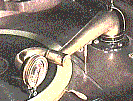 About the same time Chicester Bell and Charles Sumner Tainter experimented with cylinders coated with wax into which the sound wave was written with a sharp stylus. They called their device a graphophone. Edison picked up the idea and used it in the manufacture of his sound reproducing devices.
About the same time Chicester Bell and Charles Sumner Tainter experimented with cylinders coated with wax into which the sound wave was written with a sharp stylus. They called their device a graphophone. Edison picked up the idea and used it in the manufacture of his sound reproducing devices.
A major improvement was made by Emile Berliner. Berliner records sound on a disc rather than a cylinder. Zinc discs are coated with fatty substance which picks up the wavy trace. The trace exposes the zinc below the coating and an acid bath leaves a groove along the sound trace.
Replacing the cylinder with by a disc was an improvement in itself but Berliner went further. He made a negative of the original disc by electroplating. Now he can make inexpensive copies by pressing the negative into some thermoplastic material such as hard rubber. and makes copies into some thermoplastic material such as hard rubber.
The new recordings are more durable than the old cylinders, they give sound of greater volume and they not need a feed screw since the grooves are deep enough to guide the stylus.
Berliner called this device a gramophone. Note the interplay of science, technology and economics. The devices is simpler than their predecessors, records are mass produced. The price goes down.
Now a machine shop operator in Camden, N.J. named Eldridge R. Johnson enters the picture. He helps Berliner invent a spring driven motor with a mechanical speed regulator and an acoustic box. At this point all the essential features, retained throughout the history of the
analog phonograph , are in place.
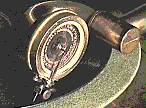 Johnson was a great salesman. He bought the rights to Berliner patents and in 1901 with Berliner as a minor partner formed the Victor Talking Machine Co. In the meantime Columbia developed a similar process but instead of starting a patent war the two companies cross-licensed their technologies.
Johnson was a great salesman. He bought the rights to Berliner patents and in 1901 with Berliner as a minor partner formed the Victor Talking Machine Co. In the meantime Columbia developed a similar process but instead of starting a patent war the two companies cross-licensed their technologies.
The advent of radio broadcasting in the 1920's caused a brief depression in the phonograph industry. However, pretty soon electrical recording techniques brought it back Victor Talking Machine Co. was purchased by Radio Corporation of America (RCA) in 1929.
1948 Columbia and RCA introduced fine-grooved (long playing) records. Columbia chose a 33 1/3 rpm 12 in format which cold play 30 minutes of sound per side. RCA introduced a 45 rpm format which could play 8 minutes of sound per side. Again the two companies collaborate and after a period of testing they both adopted both formats.
The above data from Boston Acoustics.
 2
2 